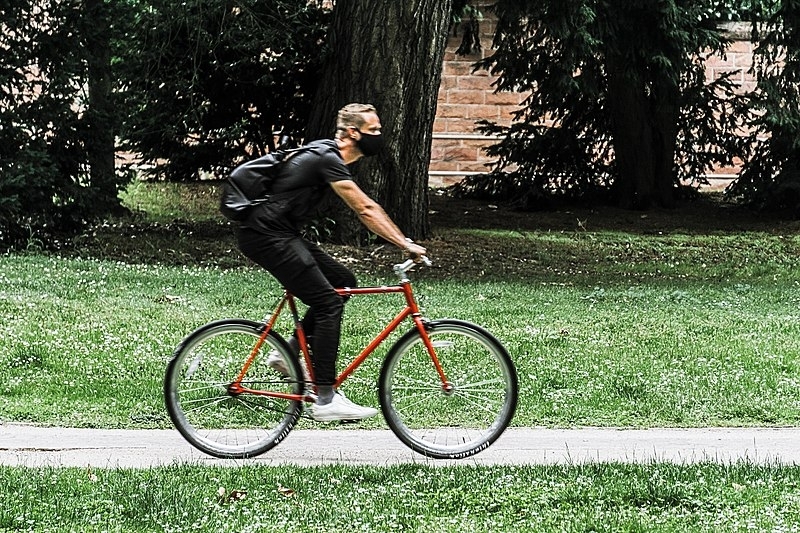

Analysis of data for more than 400,000 people shows that increasing the proportion of vigorous exercise reduces mortality by 17% compared with people who get only moderate exercise (photo: Wikimedia Commons)
Analysis of data for more than 400,000 people shows that increasing the proportion of vigorous exercise reduces mortality by 17% compared with people who get only moderate exercise.
Analysis of data for more than 400,000 people shows that increasing the proportion of vigorous exercise reduces mortality by 17% compared with people who get only moderate exercise.

Analysis of data for more than 400,000 people shows that increasing the proportion of vigorous exercise reduces mortality by 17% compared with people who get only moderate exercise (photo: Wikimedia Commons)
By Maria Fernanda Ziegler | Agência FAPESP – Science has convincingly demonstrated that regular physical exercise is an effective way to improve the quality of life and reduce mortality. A study published in the journal JAMA Internal Medicine has now shown that longevity is influenced by the intensity of exercise as well as its regularity.
The researchers analyzed data for 403,681 people to compare the reduction in mortality associated with different combinations of moderately intense and vigorous exercise for between 150 and 300 minutes per week, as recommended by the World Health Organization (WHO).
“Regular physical activity of any kind is better than nothing, but in our study the inclusion of vigorous exercises, such as soccer or running, for example, in weekly activities was associated with a reduction of mortality. We found a 17% reduction in overall mortality, including different causes of death such as cardiovascular disease and cancer, among adults whose activities were vigorous for half or three-quarters of the week compared with those who performed only moderate activities,” said Leandro Rezende, principal investigator for the study.
Rezende is a professor in the Department of Preventive Medicine at the Federal University of São Paulo’s Medical School (EPM-UNIFESP) in Brazil. He received a scholarship from FAPESP for his PhD research and a postdoctoral fellowship. In previous studies, he analyzed data in search of associations between physical activity, diet and susceptibility to chronic disease, especially cancer, and modeled the impact of interventions and public policies designed to combat disease and reduce spending on healthcare by fostering healthy eating habits and physical exercise.
He co-authored the JAMA article with researchers at Wuhan University in China, the University of Santiago de Chile, and Miguel de Cervantes European University (UEMC) in Spain. The study used data from the US National Health Interview Survey (NHIS), which every year since 1957 has assessed the self-reported prevalence and impact of illness and disability, and the population’s need for medical services as a result of these.
“Our analysis enabled us to answer an old question: which is better, moderate or vigorous activity? We showed that both are important, but putting more intensity into regular physical activity reduces mortality even more,” Rezende said. “The findings reinforce the WHO’s recommendations of at least 150-300 minutes of moderate exercise per week, 75-150 minutes of vigorous activity, or an equivalent combination.”
Intensity was measured in metabolic equivalent task units (METs), or the amount of energy expended per kg of weight per minute. Moderate intensity was defined as 3-6 METs and included activities such as walking, cycling, and housework, while vigorous intensity (more than 7 METs) included jogging, boxing, and playing soccer or handball.
“We first compared adults without exercise and those who did engage in some physical activities during the week, regardless of intensity. We found a lower mortality rate among adults who practiced some form of physical activity, regardless of age and other factors [compared with sedentary subjects], and whether the activity was moderate or vigorous. The reduction in mortality was greater when the activity was vigorous. These results corroborate the WHO’s latest recommendations on physical activity,” Rezende said.
In their analysis of data for subjects who engaged in at least some physical activity every week, the researchers calculated the proportion of moderate and vigorous exercise. “By our calculations, 75 minutes of vigorous exercise are equivalent to 150 minutes of moderate exercise per week in proportional terms,” Rezende said.
Adjustments were made to avoid biases in analyzing data for a large number of subjects with different histories. “We adjusted the analysis for possible biases due to confounding variables, which could unduly influence the results of a study on factors relating to longevity that follows people for many years. Confounders included smoking, pre-existing diseases, alcohol consumption, and other factors that could explain the correlations,” Rezende said.
The article “Association of physical activity intensity with mortality – a national cohort study of 403,681 US adults” (doi: 10.1001/jamainternmed.2020.6331) by Yafeng Wang, Jing Nie, Gerson Ferrari, Juan Pablo Rey-Lopez and Leandro F. M. Rezende can be retrieved from: jamanetwork.com/journals/jamainternalmedicine/article-abstract/2772939.
Republish
The Agency FAPESP licenses news via Creative Commons (CC-BY-NC-ND) so that they can be republished free of charge and in a simple way by other digital or printed vehicles. Agência FAPESP must be credited as the source of the content being republished and the name of the reporter (if any) must be attributed. Using the HMTL button below allows compliance with these rules, detailed in Digital Republishing Policy FAPESP.




